Simple Science Projects That Make Learning Fun for Kids
Simple Science Projects That Make Learning Fun for Kids
Science doesn’t need to be complicated or reserved for the lab. In fact, some of the best discoveries happen right at home with a few household items and a big imagination. These super simple science projects turn everyday materials into learning tools, giving kids a chance to explore the world with wonder, curiosity, and confidence.
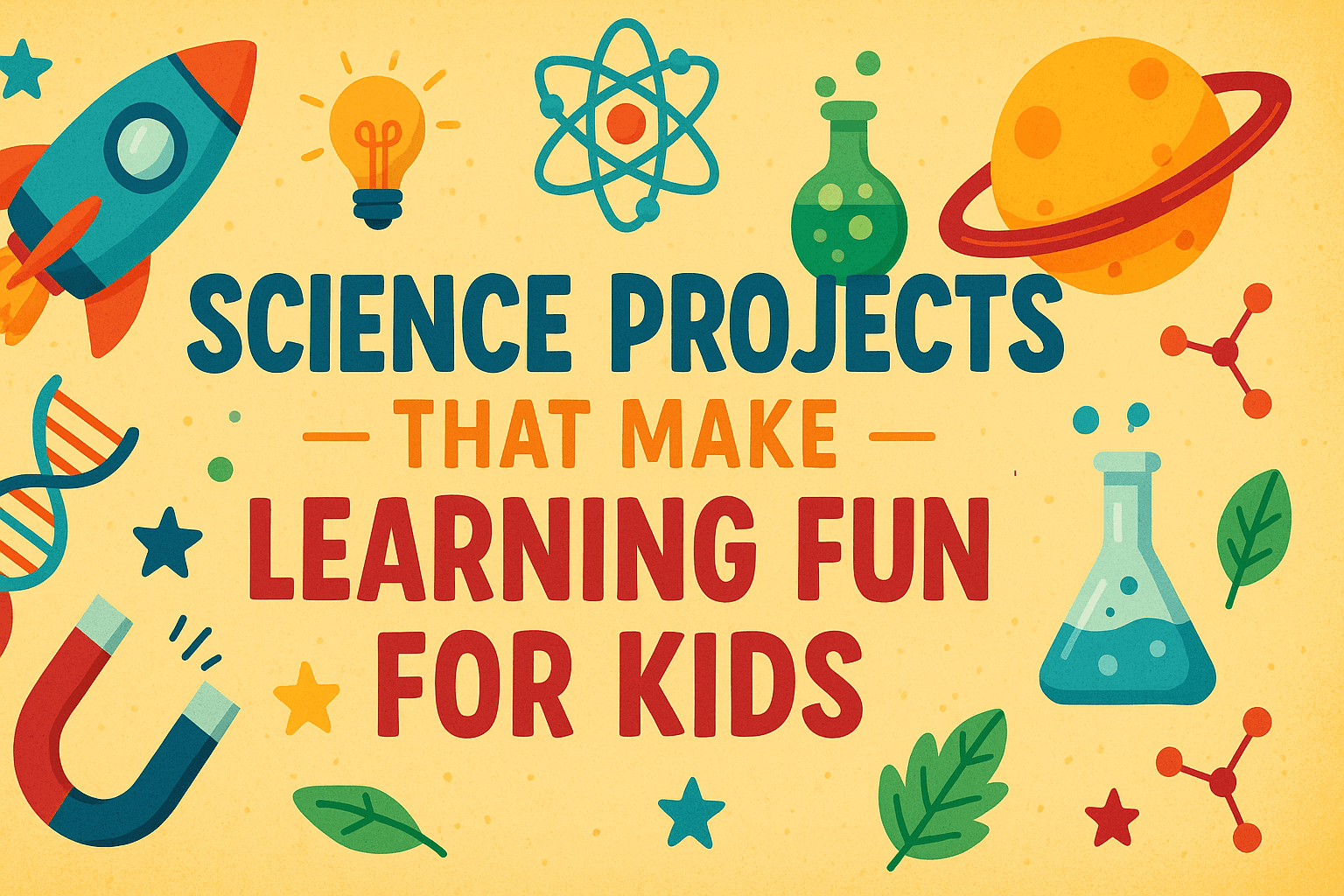
Introduction
Kids are natural scientists. They ask questions, test boundaries, and love discovering how things work. Whether you are a teacher looking for classroom activities or a parent hoping to enrich learning at home, easy science experiments are a fantastic way to keep kids engaged while building essential skills.
The beauty of these projects lies in their simplicity. With just a few ingredients like baking soda, lemon juice, or dish soap, children can observe chemical reactions, learn about air pressure, and even experiment with surface tension. These aren’t just fun; they help teach kids real science in a playful, hands-on way.
Let’s dive into some of our favorite science experiments for kids, sorted by time, materials, and learning outcome.
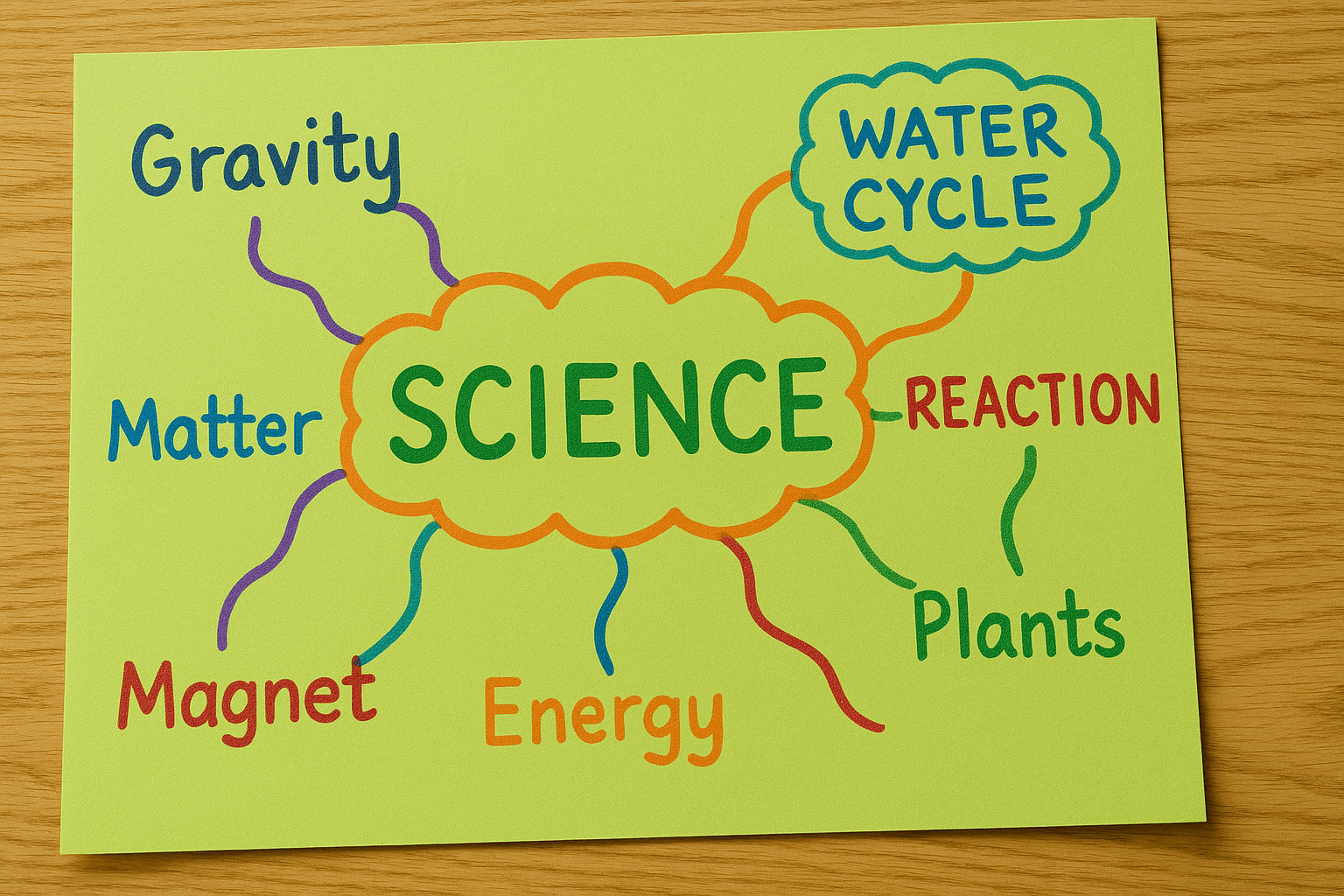
Super Simple Science Projects You Can Try at Home
When it comes to super simple science projects, the best ones often come from using what’s already in your kitchen. These easy science experiments use everyday materials but deliver real lessons in chemistry, physics, and more. They are ideal for younger children and curious minds who are just starting to explore scientific concepts in a fun, hands-on way.
One of the best parts about these activities is that they require just a few simple ingredients, yet they deliver exciting visual results that teach kids about the world around them. Here are a few favorite science experiments to get started:
Lava Lamp
This colorful science project is a kid favorite for a reason. Using tap water, vegetable oil, food coloring, and an effervescent tablet like Alka-Seltzer, kids can watch a mesmerizing reaction take place in real time.
What it teaches: This simple experiment is a great way to explore density and how carbon dioxide gas forms during chemical reactions. Oil and water don’t mix, and the bubbles created by the tablet lift colored blobs through the oil, then drop them again. It’s like a mini volcano in a jar!
Materials: Clear glass, vegetable oil, water, a few drops of food coloring, antacid tablet.
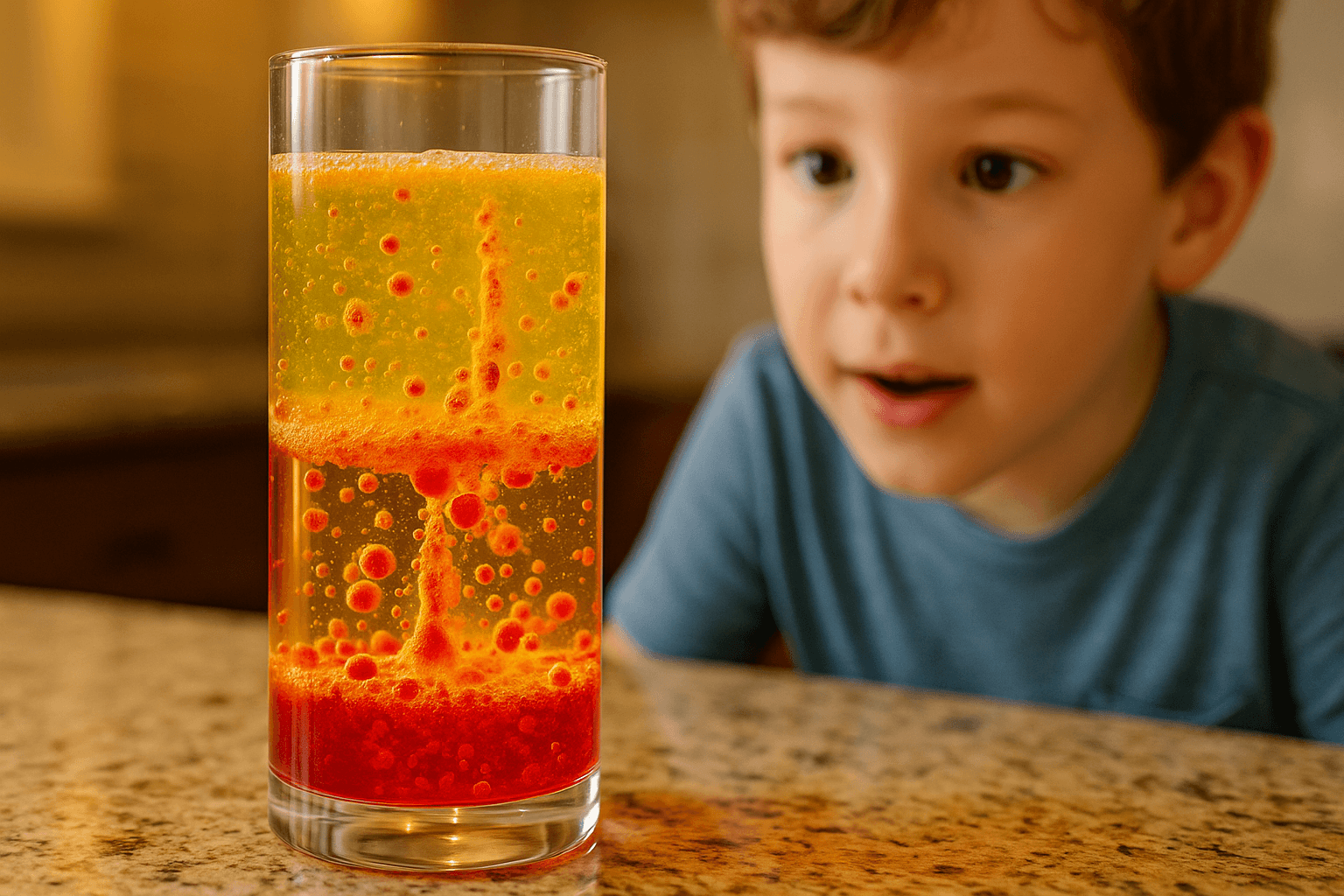
Magic Milk
A fun blend of art and science, this simple science experiment shows kids how surface tension works.
How it works: Add a few drops of different food coloring to a shallow plate of milk, then dip a cotton swab into dish soap and touch the center. Watch the colors shoot away in swirling patterns.
Why it matters: Soap reduces surface tension and interacts with the fat molecules in milk, sending the colors into motion. It’s a perfect example of how small changes in molecular structure can affect movement.
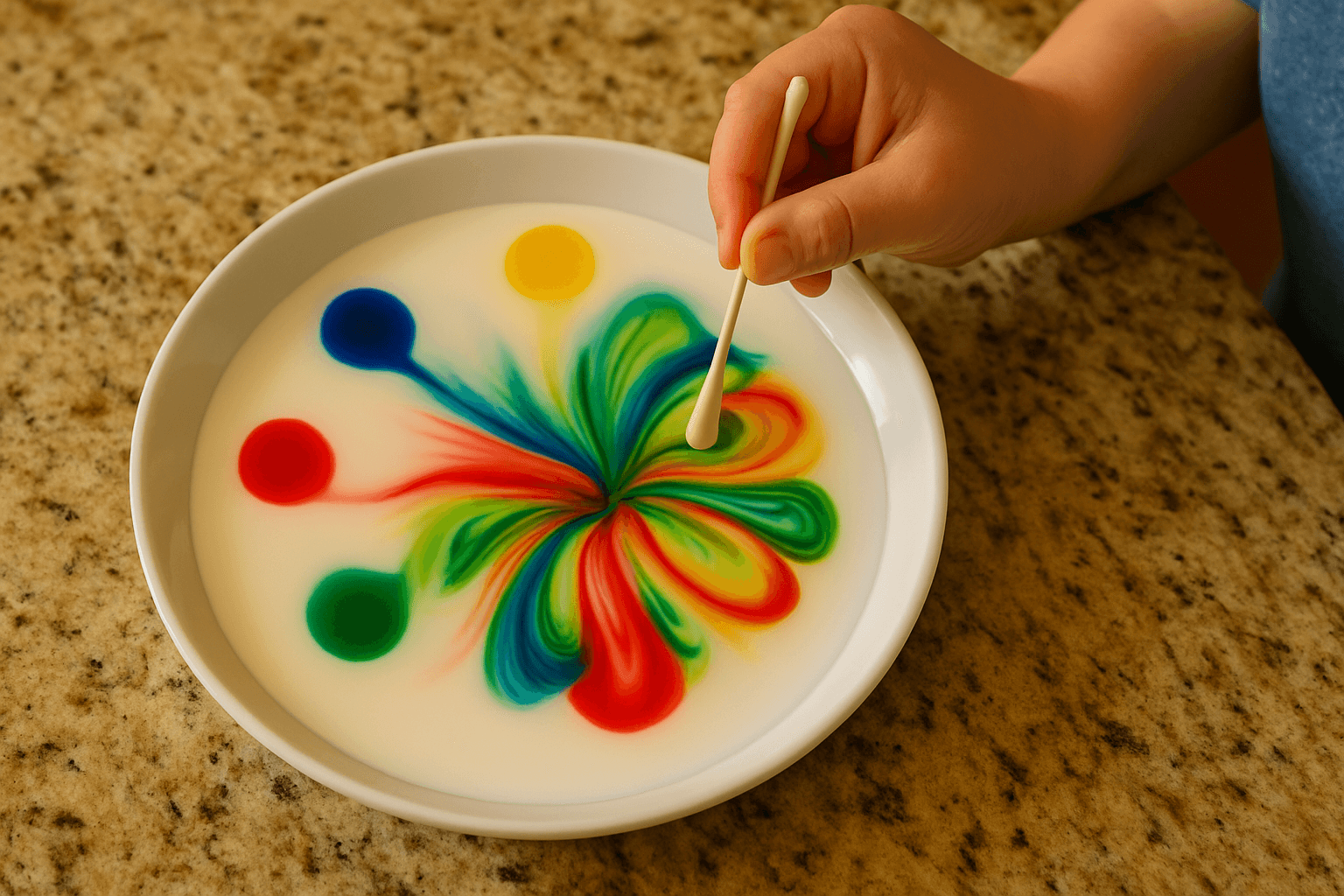
Orange Fizz
Want a fun experiment that’s also edible? Try adding baking soda to a slice of orange.
What happens: The reaction between the lemon juice (citric acid in the orange) and baking soda creates fizzy carbon dioxide bubbles.
This is one of those easy experiments that’s safe to taste and easy to repeat, ideal for preschoolers and early primary students.
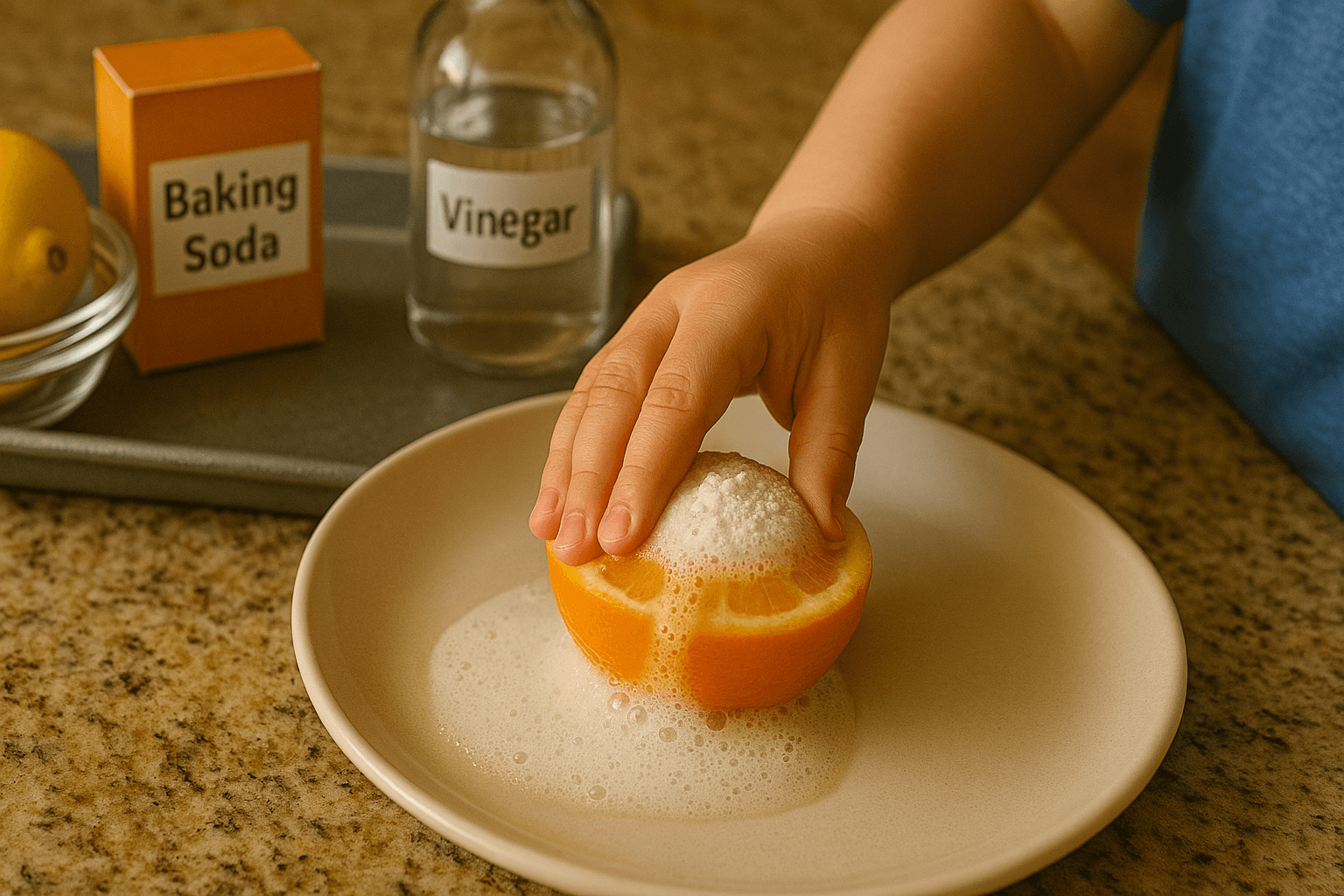
Quick Science Experiments That Kids Can Finish Fast
When time is short but curiosity is high, quick science experiments are a perfect choice. These activities offer all the excitement of a full-blown science experiment, just with less setup and faster results. Whether you are filling time between subjects in a classroom or sneaking in a bit of hands-on learning before dinner, these easy science experiments are ideal for keeping kids engaged.
The beauty of these fast projects is that they don’t require complex materials or preparation. With a few simple ingredients like baking soda, food coloring, or a glass of soda, kids can witness fascinating chemical reactions, explore the forces of nature, and practice core observation skills.
Here are a few standout quick experiments to try:
Dancing Raisins
A true classic, the dancing raisins experiment requires only a glass of carbonated soda and a few raisins.
What it teaches: This activity demonstrates gas behavior and buoyancy. As carbon dioxide bubbles stick to the raisins, they lift them upward. Once the bubbles pop, the raisins sink only to rise again.
Why it matters: Kids learn about how gases can impact the movement of solids and how bubbles help objects float.
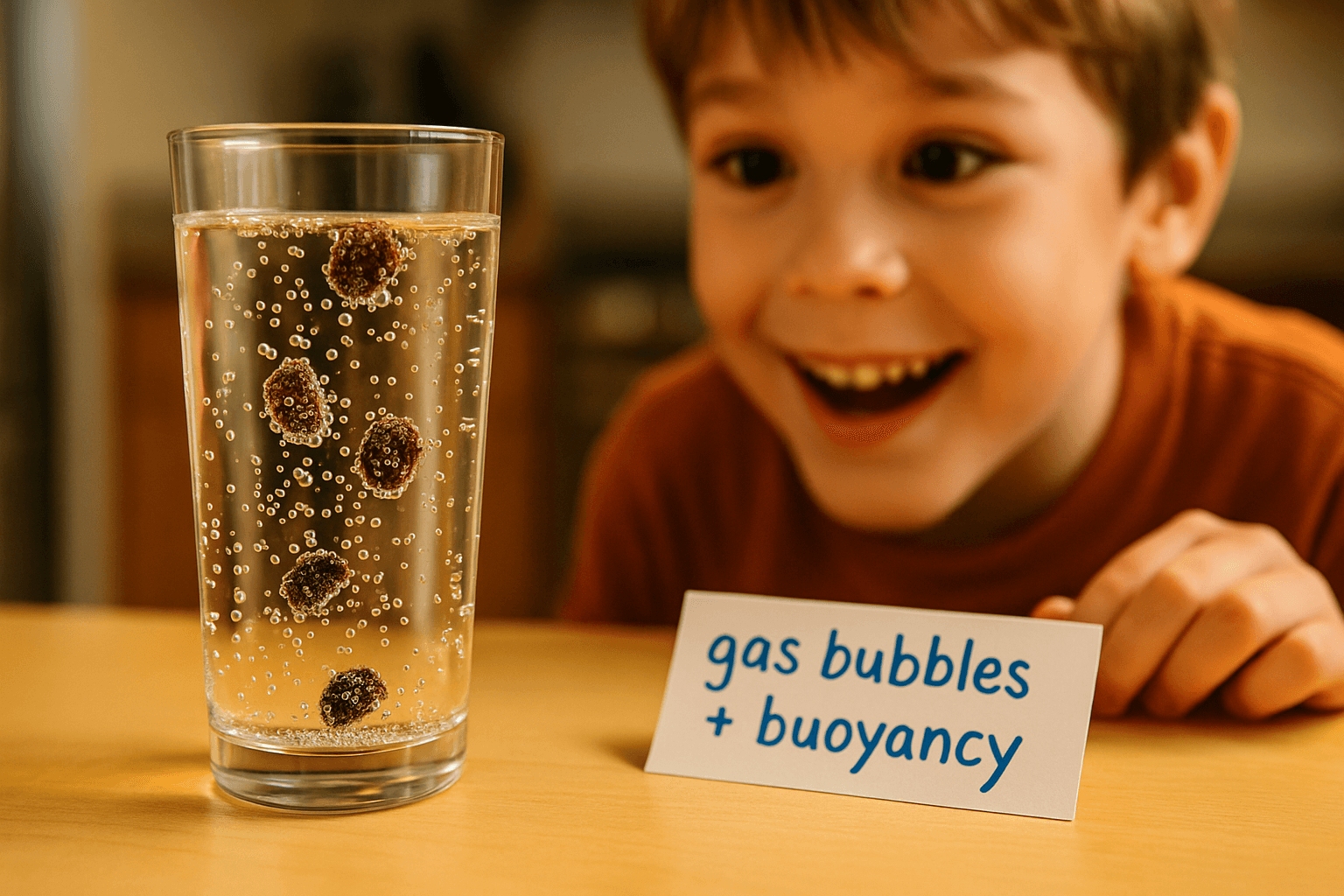
Raising Water
This science experiment uses a shallow dish, water, a candle, and a clear glass to show how air pressure can move water.
How it works: Light the candle in the center of the dish filled with a little water. Then place the glass upside-down over the candle. As the flame uses up the oxygen inside the glass, it extinguishes, and water rises into the cup.
The science behind it: The drop in air pressure inside the glass causes outside pressure to push water in. This is a great way to explore air pressure using common household items.
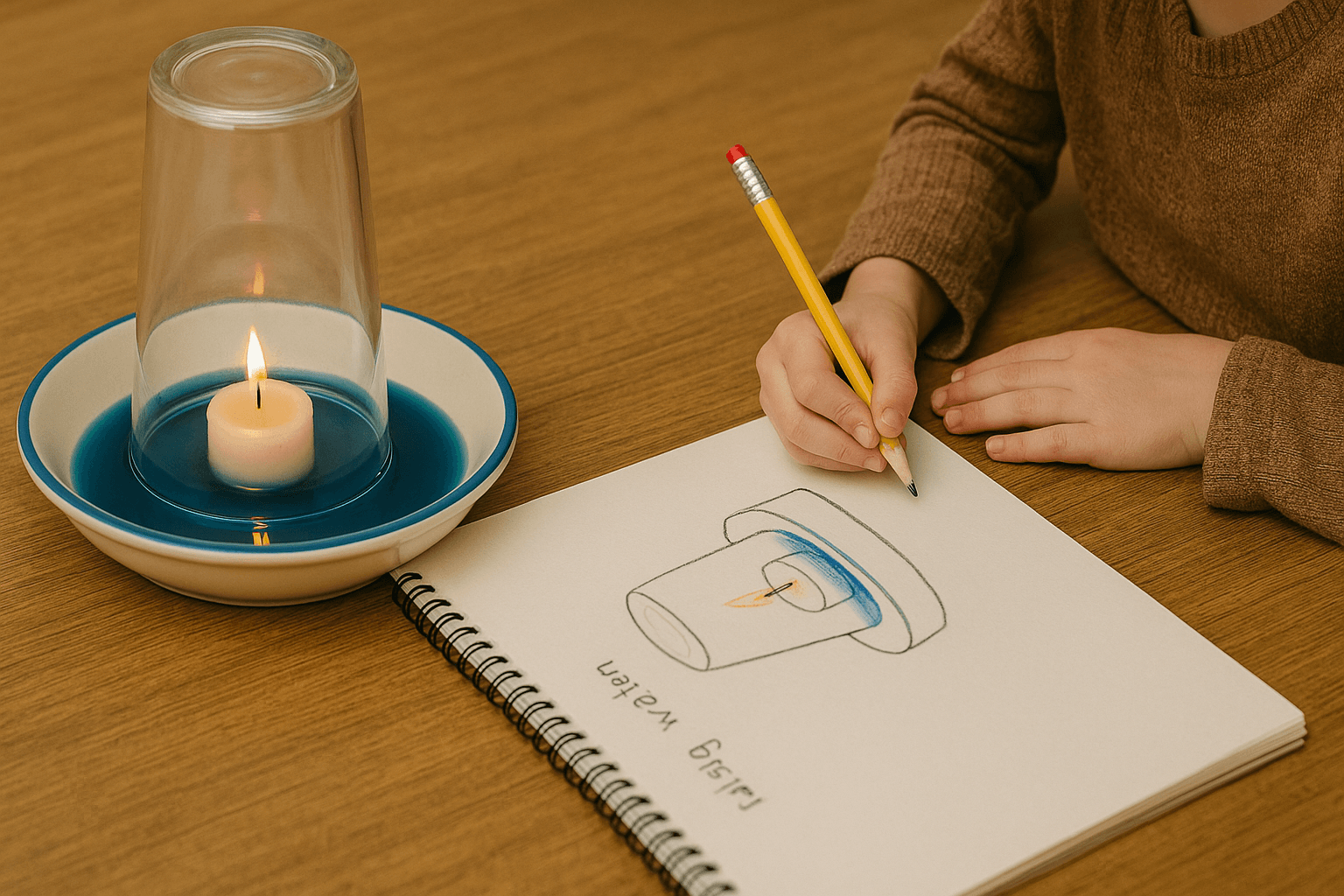
Water Walking
With just paper towels, three clear cups, and food coloring, this easy science experiment shows how liquids can "walk."
What kids learn: This explores capillary action, where water moves upward through fibers similar to how plants draw water from soil.
Extra value: Add warm water or cold water to compare how temperature affects the speed of absorption. It's a great way to integrate simple variable testing.
These quick activities prove that learning doesn’t always need a lab or even a long attention span. With a few drops of color, a spark of curiosity, and some everyday materials, children can observe big scientific ideas unfold in just a few minutes. Best of all, each experiment is easy to clean up and easy to repeat.
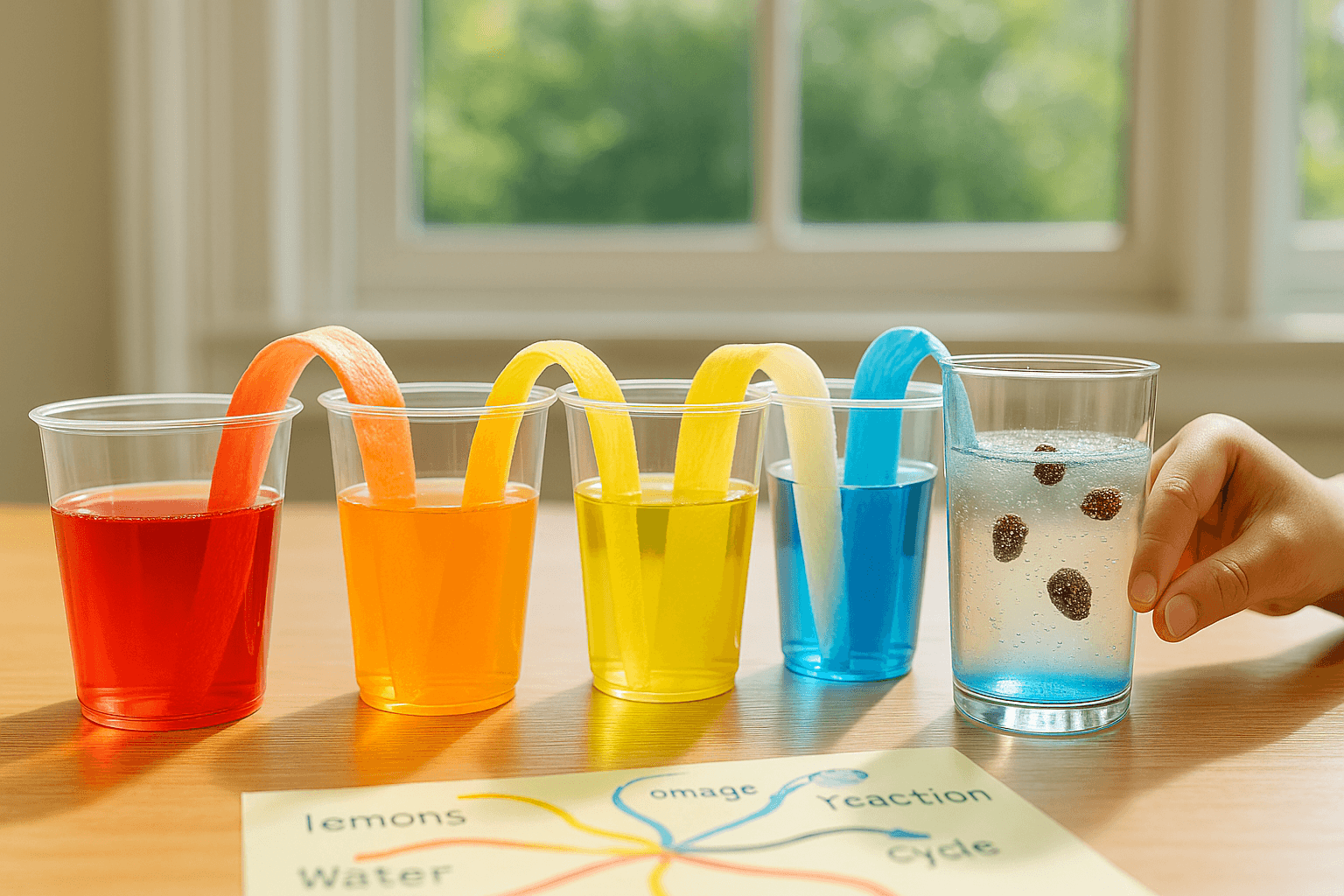
Cool Easy Science Projects That Feel Like Playtime
When science looks like play, kids are more likely to stay curious, ask questions, and dive deeper. These cool easy science projects feel more like art, games, or messy fun but every single one introduces meaningful scientific ideas. Whether it’s exploring chemical reactions, tapping into earth science, or understanding static electricity, these projects strike the perfect balance between fun and learning.
Here are some great hands-on activities that make science experiments for kids feel like magic and secretly, like learning too:
Colorful Foam
This foamy favorite blends baking soda, dish soap, vinegar, and food coloring to create a fizzy, colorful eruption that feels more like a party trick than a science experiment.
Why kids love it: It’s hands-on, bright, and unpredictable. They get to mix, pour, and watch it bubble over.
What it teaches: This simple experiment demonstrates chemical reactions in action. When baking soda (a base) meets vinegar (an acid), it creates carbon dioxide gas—and when you add dish soap, the bubbles go wild.
Bonus idea: Create rainbow-colored foam towers by using different cups with separate colors. Let kids guess which combination will rise fastest.
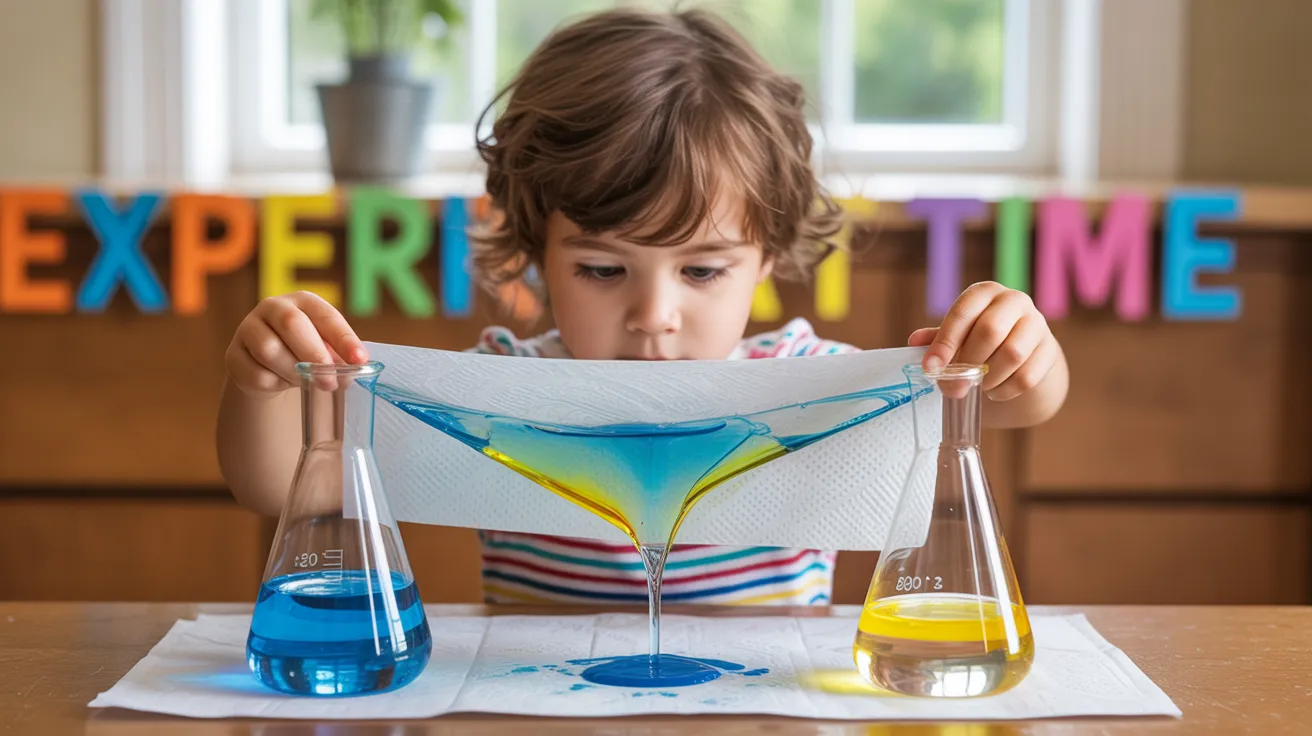
Rainbow Jar
Layering different liquids like honey, dish soap, water, oil, and rubbing alcohol in a jar shows just how varied substances can be, even when they look the same.
Concepts introduced: Kids begin to explore density, understanding that heavier liquids settle at the bottom and lighter ones float to the top.
Add a twist: Drop small objects (like beads or buttons) into the jar and watch where they land to predict their density.
Why it works: The variation in molecular structure gives each liquid a unique weight, helping teach kids how to observe and test using simple tools.
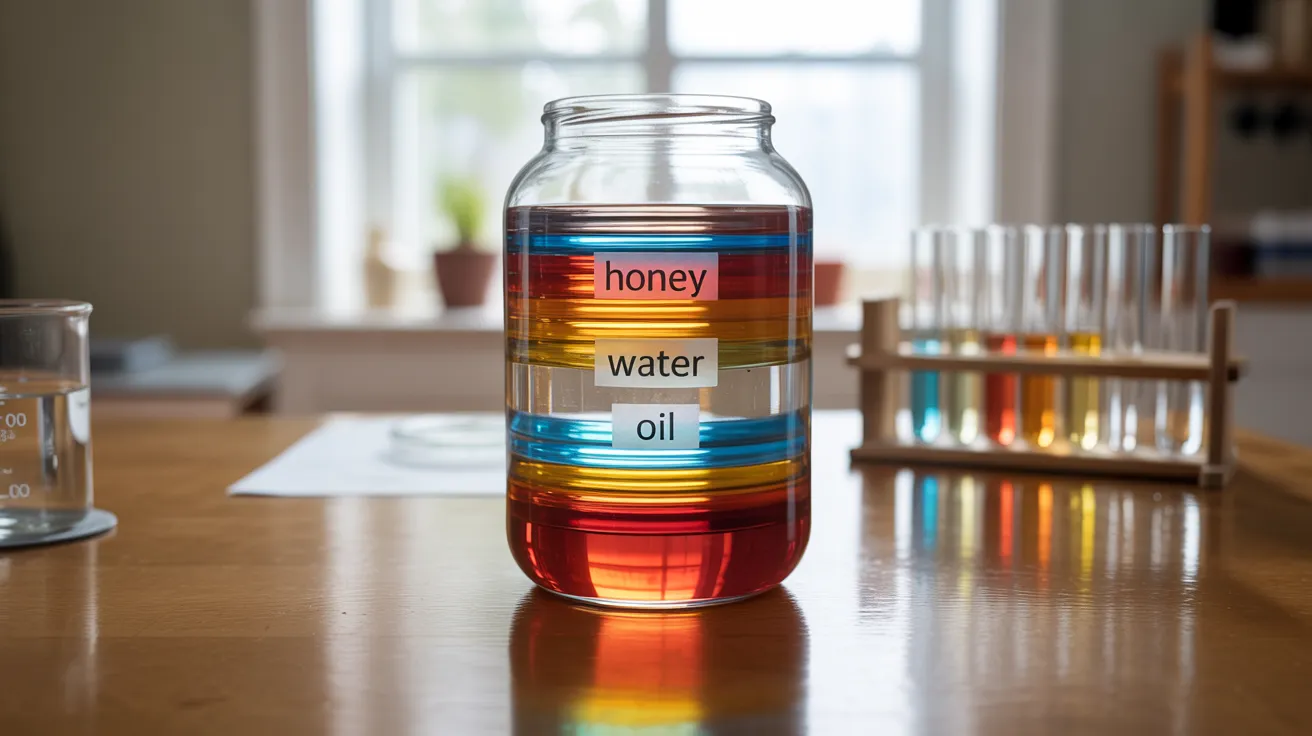
Rock Candy
If your child loves sweet rewards, this science experiment might just become a favorite. The Rock Candy Jar uses a few simple ingredients: sugar, water, and a stick to grow edible crystals right at home.
How it works: Boil warm water and add sugar until it won't dissolve anymore, this is your supersaturated solution. Pour the mixture into a clean glass jar, hang a string or skewer in the center, and wait.
Science lesson: As the water cools and evaporates, sugar particles begin to cling to the stick and each other, forming visible crystals. It’s a slow but fascinating process that teaches kids about evaporation, molecular bonding, and observation over time.
Why it's effective: This simple science experiment builds patience while visually demonstrating chemical reactions and crystal formation. It also offers a great way to connect earth science with everyday experiences.
Bonus idea: Add food coloring for bright, gem-like results or compare crystal growth using hot and cold water solutions. Kids can predict which one grows faster, an easy introduction to the scientific method.
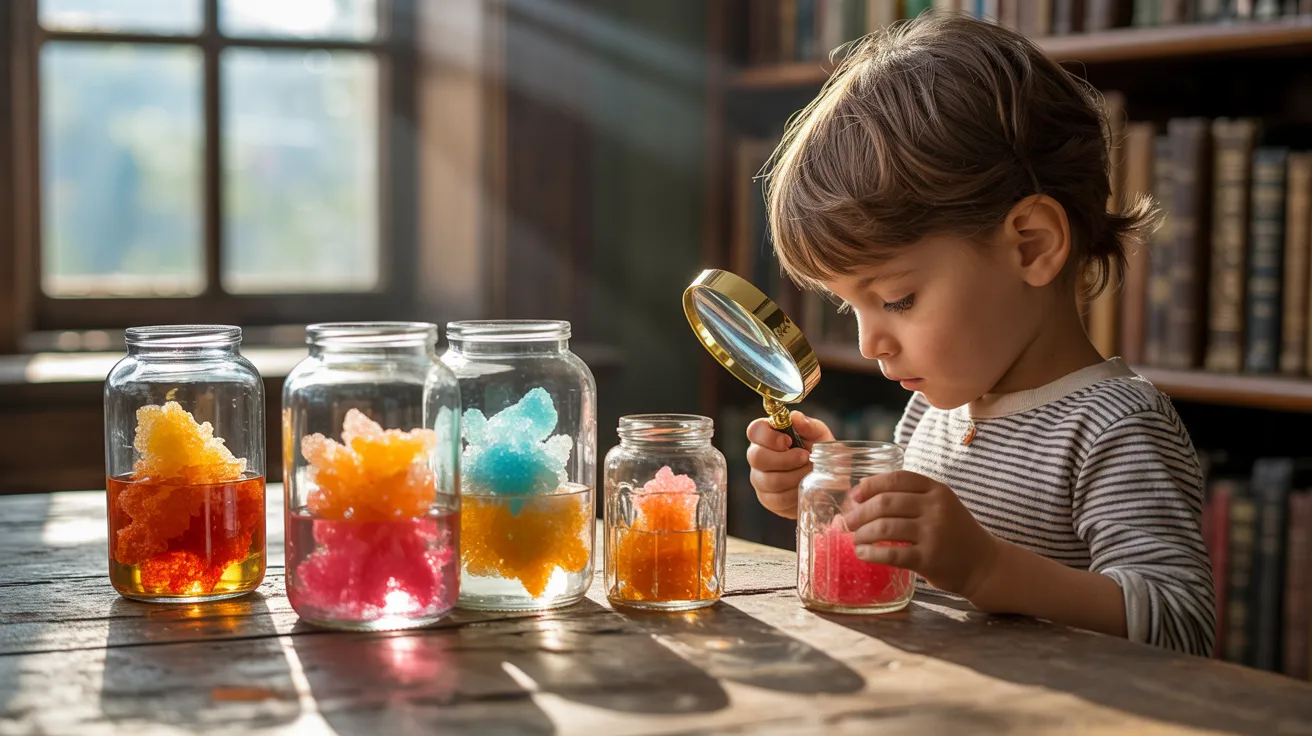
Easy Science Projects to Make Using Simple Materials
You don’t need a lab coat or expensive kits to do real science. In fact, some of the best easy science experiments use items you already have at home like paper clips, wire, bread, balloons, or even just a piece of foil. These projects help kids understand big concepts through small actions. With a few simple materials and a little curiosity, you can unlock a world of discovery.
What’s special about these activities is that they build confidence. When kids create something with their own hands especially without needing fancy equipment, they start to see themselves as capable problem solvers and budding young scientists.
Here are a few simple yet powerful science experiments for kids that demonstrate real science using real-world tools.
Simple Circuit
This simple experiment introduces children to the fundamentals of electricity in a way that’s hands-on and exciting. It’s also a stepping stone to understanding how everyday technology works.
What you need: A battery, some copper wire, and a small light bulb or buzzer. You can also add a plastic bag or switch to control the circuit.
What it teaches: Electricity flows in a loop. When the circuit is complete, the light bulb turns on, introducing kids to concepts like current, energy transfer, and conductivity.
STEM skills: It's a great engineering challenge, encouraging kids to problem-solve and adjust connections until it works.
Bonus tip: Let kids build a switch using just a piece of foil and cardboard. This gives them a practical introduction to switches and control mechanisms.
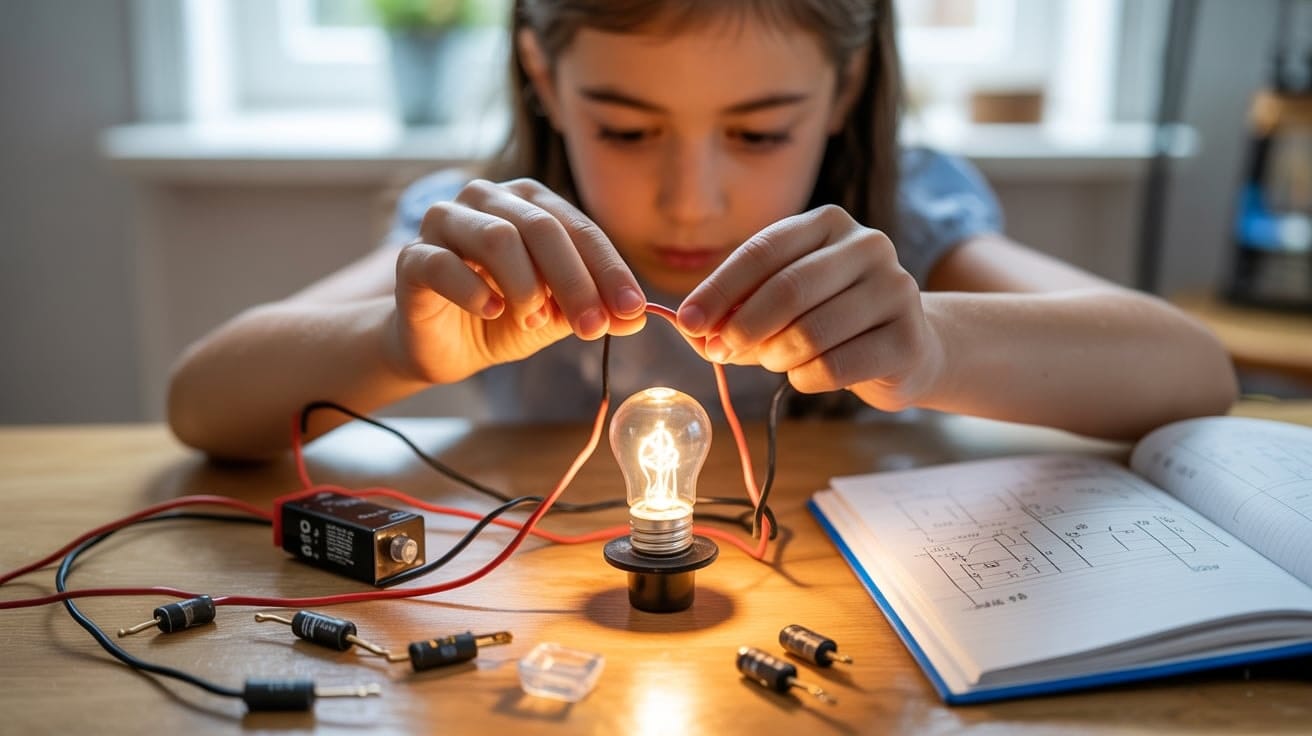
Mold Test
This one is less flashy but incredibly valuable for teaching the scientific method and helping kids practice patience.
What to do: Place slices of bread in different environments like the one in a sealed plastic bag, another in open air, and one in a warm, damp spot. You can even touch one with dirty hands and keep another sterile.
Why it matters: Over time, mold begins to form, and students can document growth patterns based on exposure to air, moisture, and cleanliness.
Skills developed: Hypothesis testing, scientific observation, and the concept of variables.
Pair this experiment with a science journal to help kids record daily changes and draw conclusions, key habits for any young scientist.
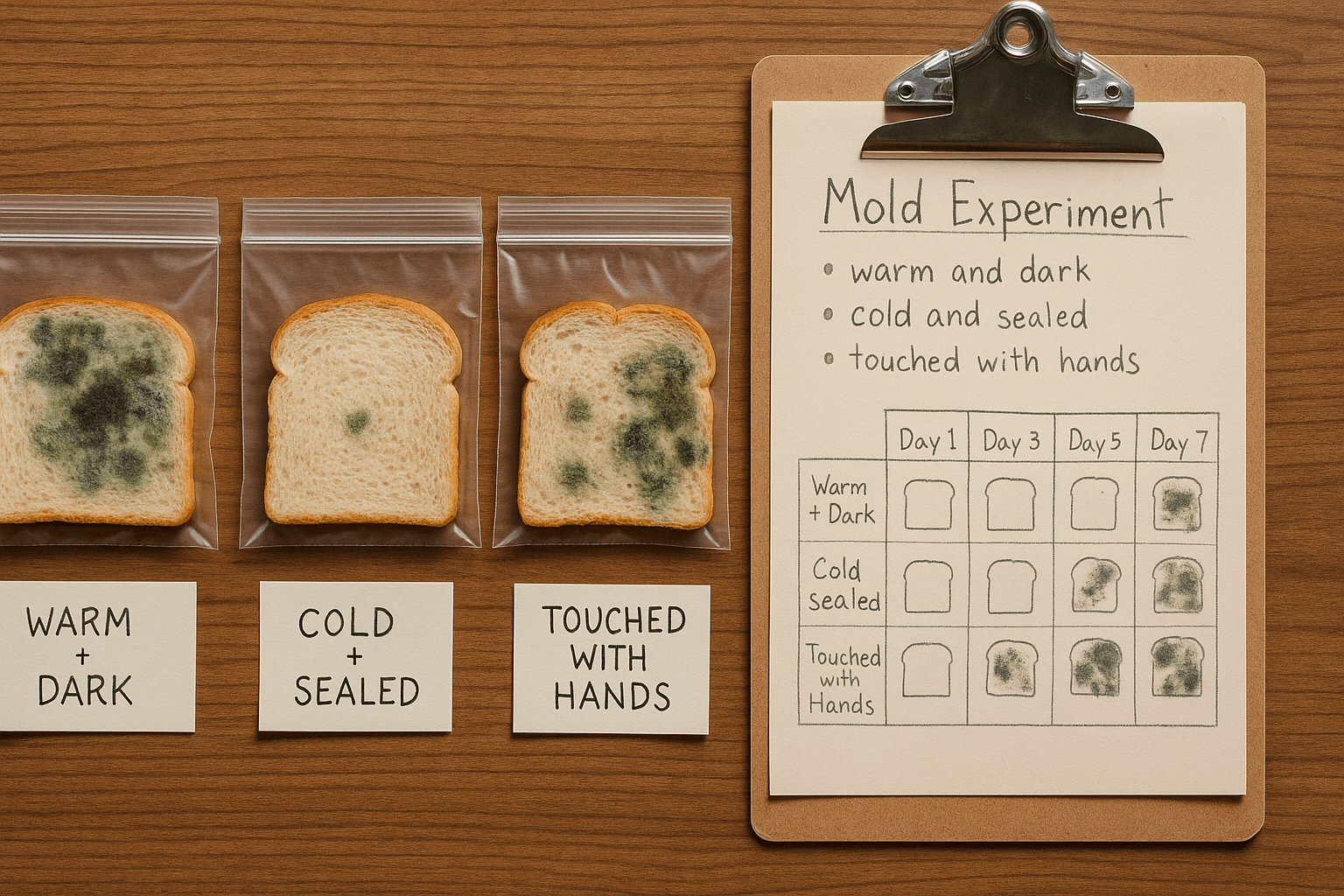
Sound Wave Discovery
Sound is all around us, but how often do kids think about how it travels? This sound experiment helps them see the invisible through vibration.
Setup: Tie a string between two paper cups. Speak into one and listen from the other.
Concepts explored: How sound waves travel through solids and how tension affects sound clarity.
Why kids love it: It feels like magic but it’s science.
Bonus: experiment with strings of different lengths or materials for comparison.
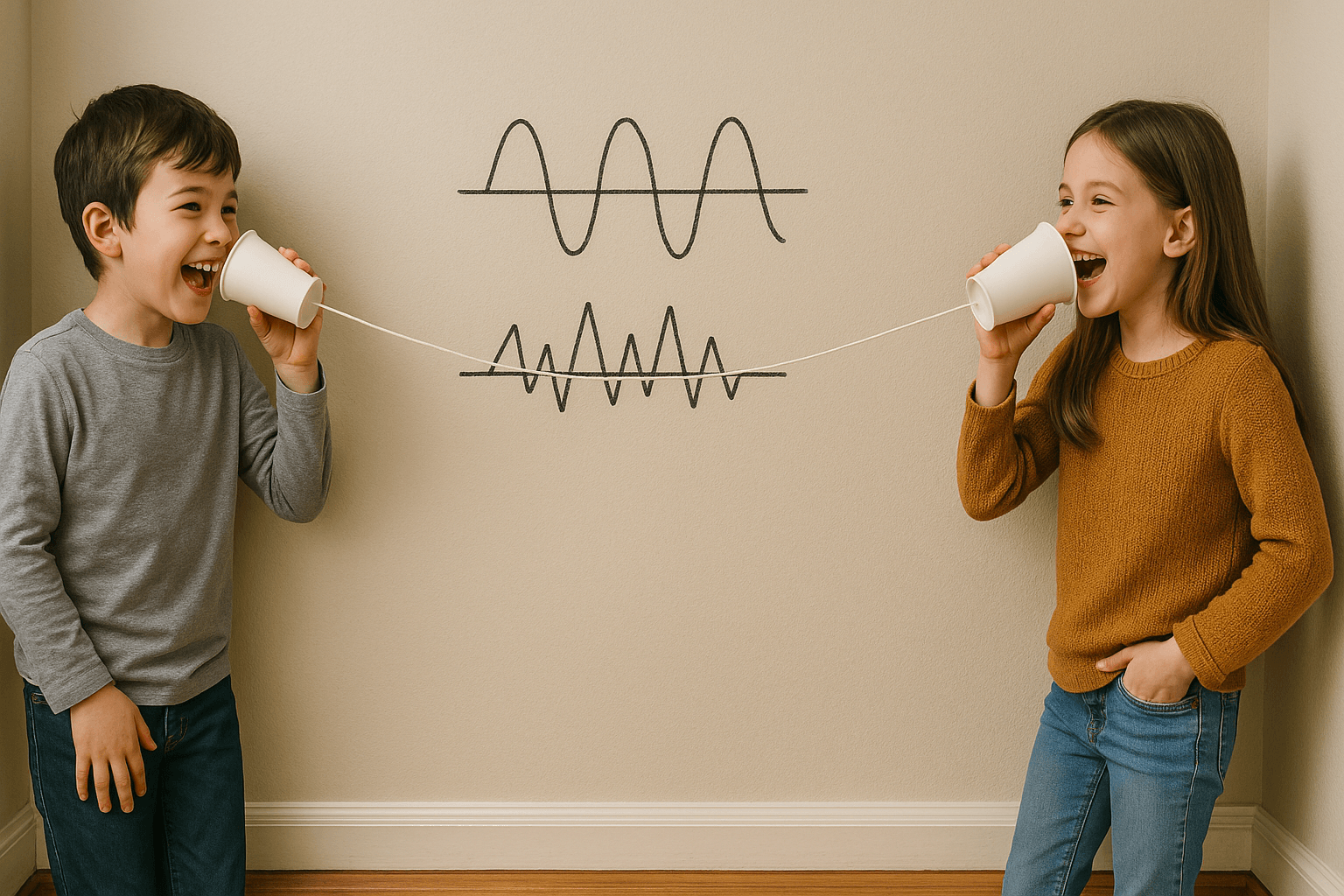
Science Experiments with Explanation to Deepen Understanding
The best way to help young scientists retain knowledge is to pair every fun experiment with a clear explanation.
Using everyday materials, kids can explore big ideas like chemical reactions, the water cycle, and even the human body.
A classic favorite like elephant toothpaste demonstrates rapid gas release, while invisible ink written with lemon juice shows heat-activated change.
Activities like the shaving cream rain cloud and soda bottle density test offer engaging ways to apply the scientific method.
With just a few drops of creativity, children learn to ask questions, predict outcomes, and truly understand what they see.
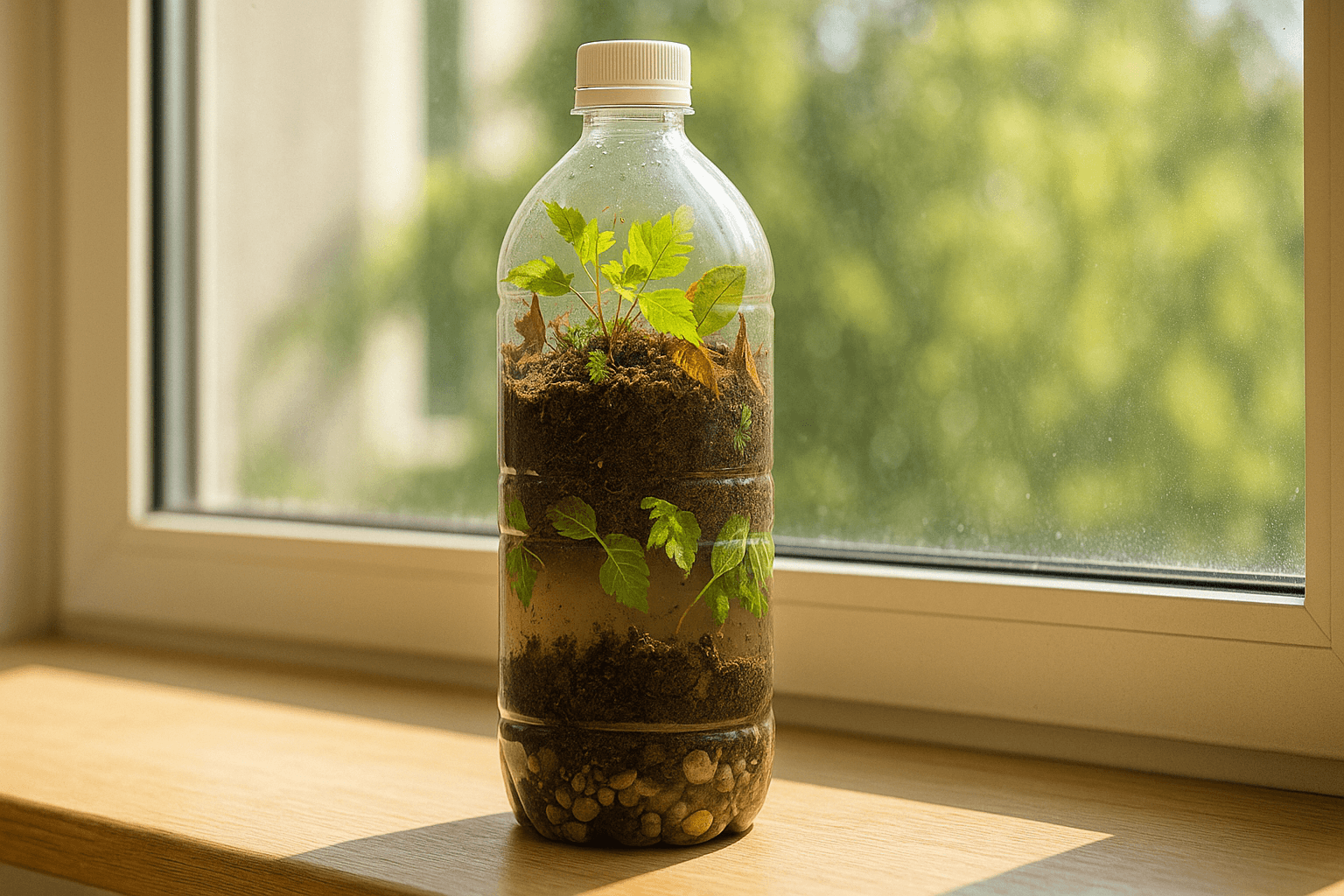
Safety Tips and Learning Hacks for Doing Science at Home
While science experiments for kids can be exciting, safety is always the first priority especially when working across any age group. Follow these simple tips to keep science activities both safe and productive:
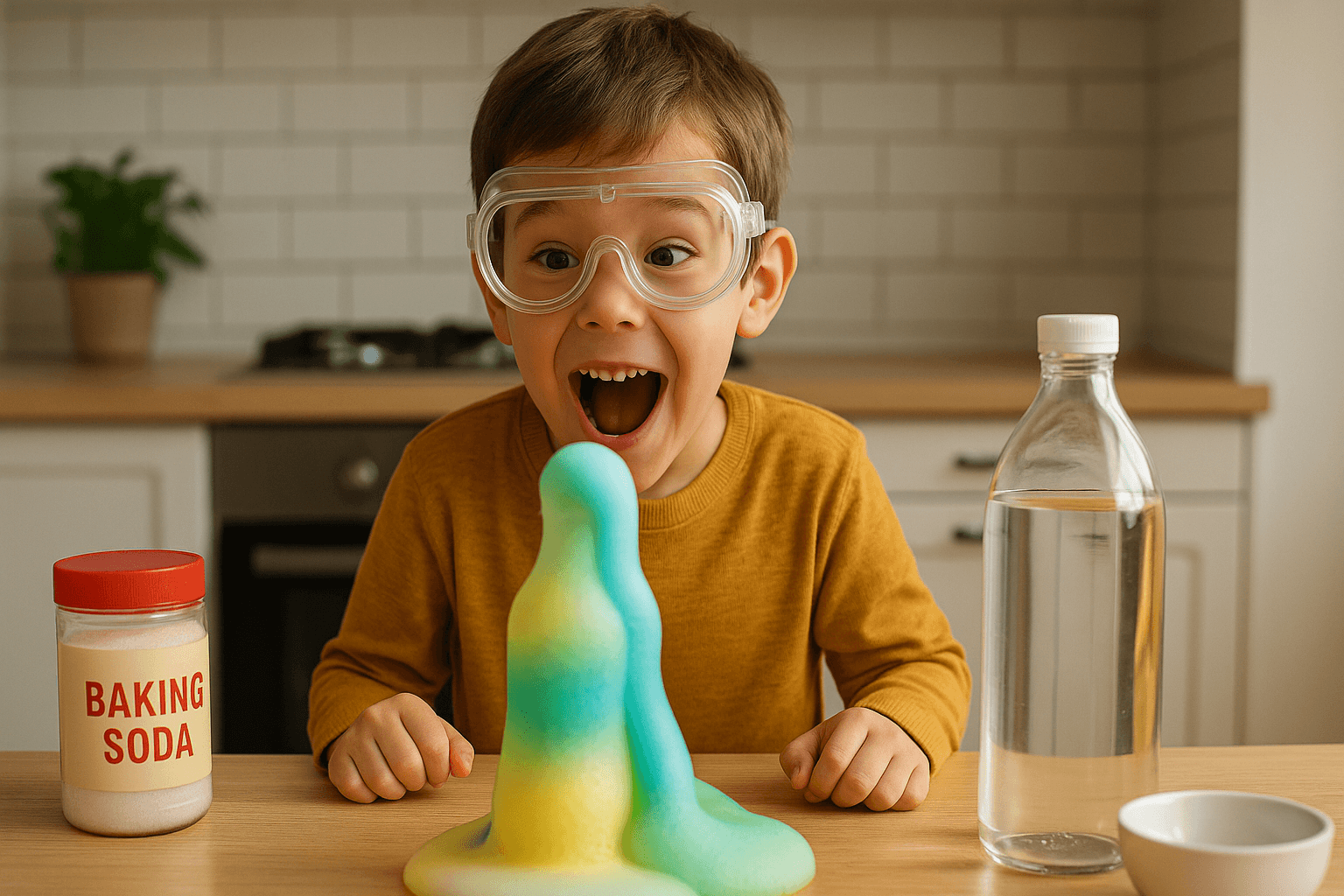
Always supervise children, especially when using heat, vinegar, or ingredients in a classic experiment like elephant toothpaste.
Use protective gear like goggles and gloves help kids feel like real scientists and stay safe.
Choose age-appropriate fun STEM activities and adjust instructions for each age group.
Keep your setup simple using plastic bottles, a ping pong ball, or everyday materials.
Ask guiding questions like “What do you think will happen?” to encourage thinking before doing.
Help kids journal their results with sketches or sentences, many experiments become more meaningful this way.
Try one project at a time to focus attention and reduce mess.
Science Projects – FAQs
How do quick science experiments help develop curiosity in early learners?
Quick science experiments give immediate results, which help spark excitement and raise new questions. When a child watches an ice cube melt faster on a glass plate than on paper, or sees baking soda bubble from vinegar in just seconds, they want to explore more. Each experiment takes only a few minutes but leaves a lasting impression. These small discoveries invite children to look closer at the water’s surface, observe change, and continue asking “why?”
Are cool easy science projects suitable for classroom demonstrations?
Absolutely! Cool easy science projects work beautifully in group settings because they are visual, engaging, and don’t require complicated tools. Demonstrations with different liquids, salt water, or a simple rain gauge made from a plastic bottle can connect well with Earth science lessons. Activities like watching light refraction through water or testing air resistance with paper airplanes are crowd-pleasers that encourage group observation and class discussion without overwhelming young learners.
What makes easy science projects to make more effective than science videos?
When kids participate physically whether they are mixing baking soda, pouring salt water, or creating invisible ink with lemon juice, they engage multiple senses. Unlike videos, where the action is passive, hands-on projects like testing surface tension with a few drops of soap or building the biggest bubbles help them retain concepts longer. That’s because easy science experiments let them create, fail, retry, and see real reactions unfold right in front of them.
Can science experiments with explanation support learning goals?
Yes! When you pair a science experiment with age-appropriate explanation, children develop deeper understanding. Try exploring hydrogen peroxide reactions in a foamy volcano or demonstrate light refraction using a glass plate and water. Then, ask them to explain what they saw using drawings or a dry erase marker. This reinforces vocabulary, observation, and reasoning skills. These activities align with real-world outcomes and supports literacy, problem-solving, and the core objectives behind every curriculum’s learning goals.
What are the benefits of super simple science projects for preschool-aged kids?
Super simple science projects are ideal for preschoolers because they allow little hands to explore safely and meaningfully. Projects using play dough, construction paper, or even freezing temperatures (like watching what happens when an ice cube melts in different liquids) help improve coordination and thinking skills. Activities like making invisible ink, exploring the water’s surface, or observing color mixing also boost fine motor development and confidence. They are fun, safe, and age-appropriate.
What are some super simple science experiments kids can do without adult supervision?
For independent learning, choose easy science experiments that use safe ingredients and require little oversight. Examples include magic milk, dancing raisins, or testing surface tension by placing a few drops of food coloring in water. Kids can also experiment with paper airplanes, biggest bubbles, or observe what floats in salt water. These hands-on projects allow exploration, foster independence, and let kids experiment safely while learning about physics, chemistry, and Earth science in a natural way.
Comments
Your comment has been submitted successfully!